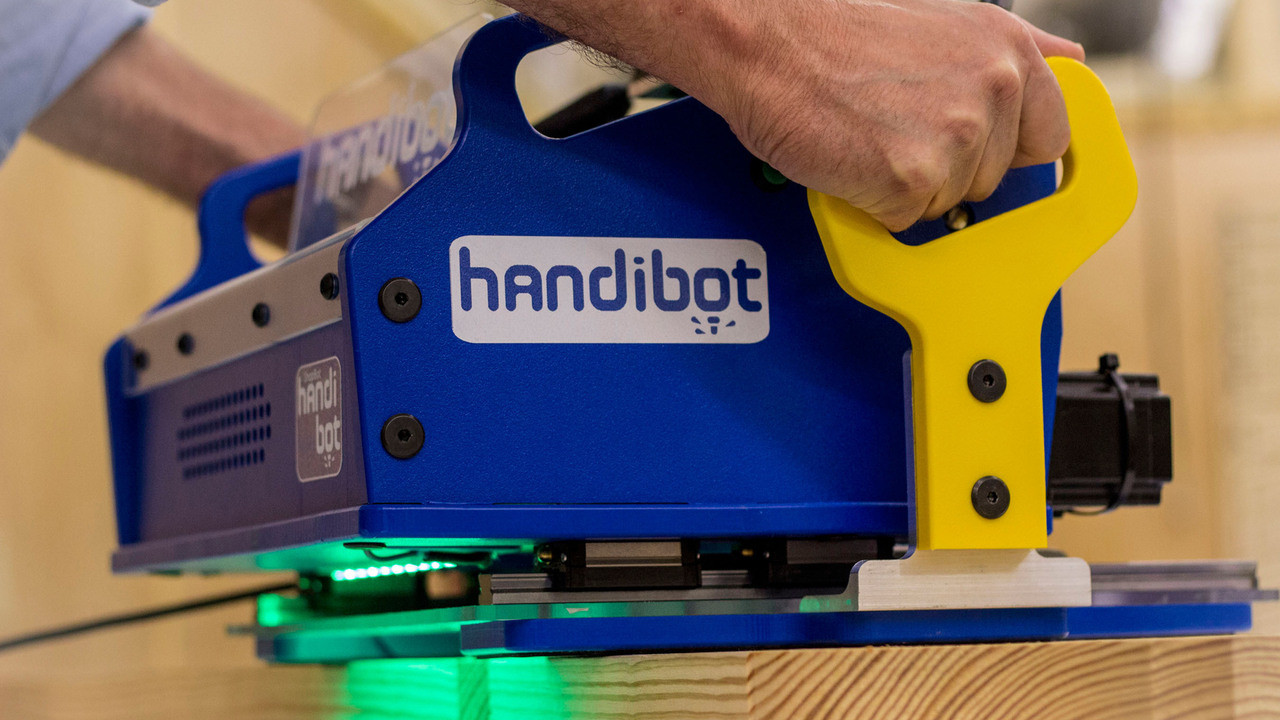3D printing inside out
Handibot handheld milling machine as an alternative to 3D sandcasting sandcastles.

A funny thing: praising 3D-printing, few people remember about milling - no less revolutionary technology that gave birth to modern engineering and is still used in mass production .
')
There are two reasons for this forgetfulness: firstly, milling appeared long before the Internet, namely in 1818. And even when computerized control systems for milling machines were developed, namely in the 1950s, there was still no Internet. Secondly, huge machines very rarely become the subject of adoration of the masses. Especially if they are noisy, dirty and the only place where you come in contact with them is a labor class lesson in 9th grade.
However, a team of enthusiasts from ShopBot decided to break the system and published the idea of a portable machine on Kickstarter. The project started in June 2013 and literally in 4 days collected about 350 thousand dollars. A year later, the team presented the mobile Handibot machine: in size it is no more than a personal 3D printer, in capabilities it is superior to any of them.
In contrast to 3D printing, which at the very least copes with metal, milling can boast of versatility in the processing of materials and high separation ability. There will be no “after assembly with the file” either: the cutter itself is a file.
On the other hand, I admit: for the Handibot they have not yet written a stack of user-friendly applications, as happened with 3D printers, but for the fans, the standard 3D modeling is enough. Therefore, if you really choose what to drag yourself into the garage, it is worth considering an alternative.

A funny thing: praising 3D-printing, few people remember about milling - no less revolutionary technology that gave birth to modern engineering and is still used in mass production .
')
There are two reasons for this forgetfulness: firstly, milling appeared long before the Internet, namely in 1818. And even when computerized control systems for milling machines were developed, namely in the 1950s, there was still no Internet. Secondly, huge machines very rarely become the subject of adoration of the masses. Especially if they are noisy, dirty and the only place where you come in contact with them is a labor class lesson in 9th grade.
However, a team of enthusiasts from ShopBot decided to break the system and published the idea of a portable machine on Kickstarter. The project started in June 2013 and literally in 4 days collected about 350 thousand dollars. A year later, the team presented the mobile Handibot machine: in size it is no more than a personal 3D printer, in capabilities it is superior to any of them.
In contrast to 3D printing, which at the very least copes with metal, milling can boast of versatility in the processing of materials and high separation ability. There will be no “after assembly with the file” either: the cutter itself is a file.
On the other hand, I admit: for the Handibot they have not yet written a stack of user-friendly applications, as happened with 3D printers, but for the fans, the standard 3D modeling is enough. Therefore, if you really choose what to drag yourself into the garage, it is worth considering an alternative.
Source: https://habr.com/ru/post/366713/
All Articles